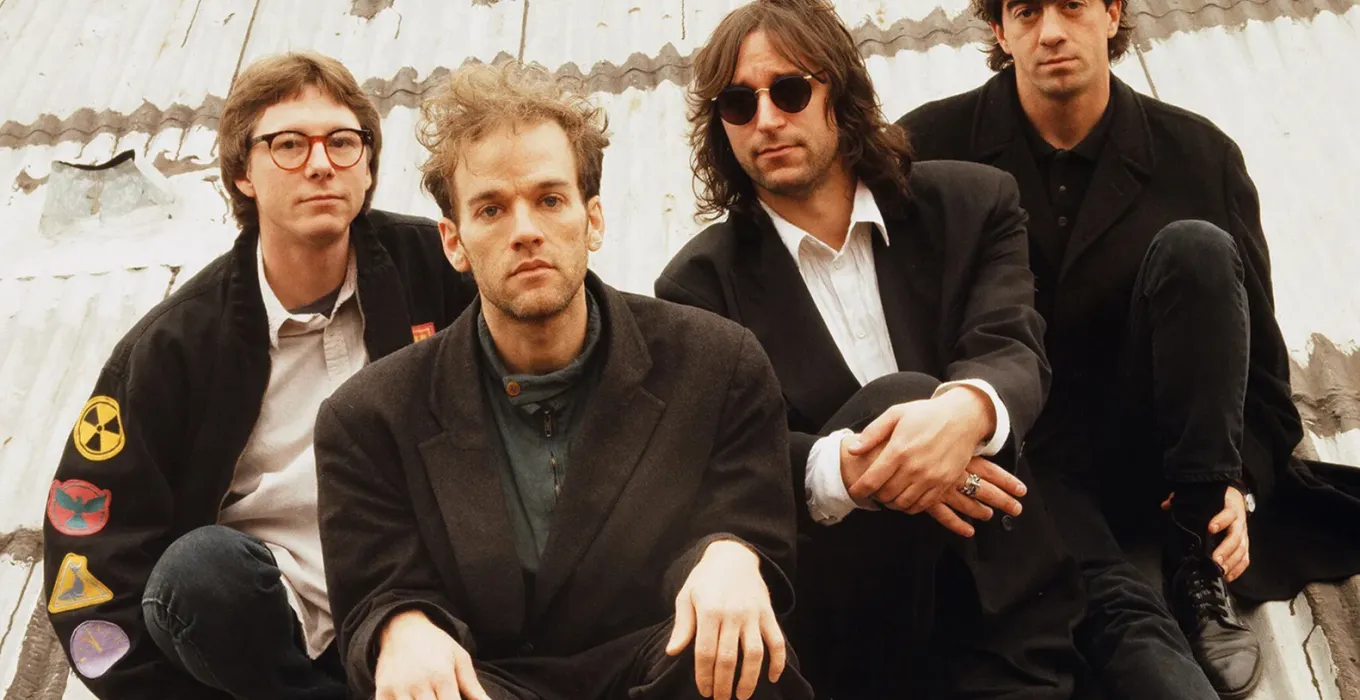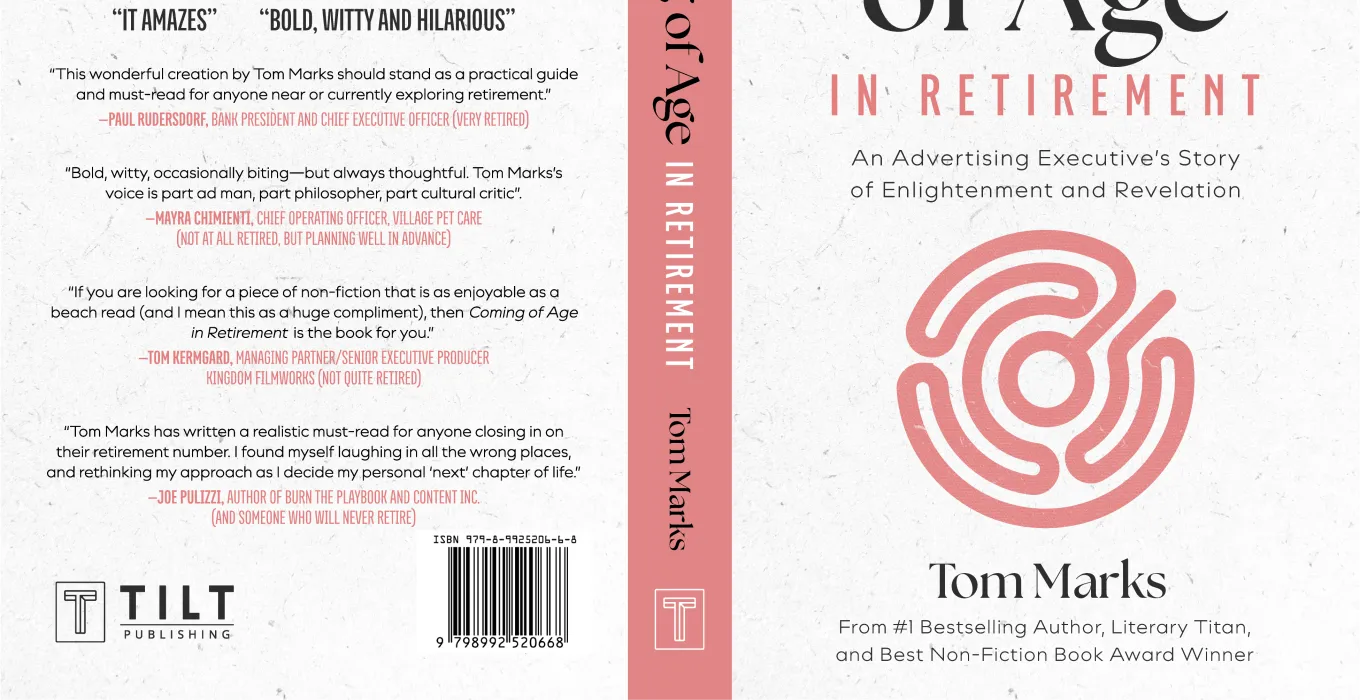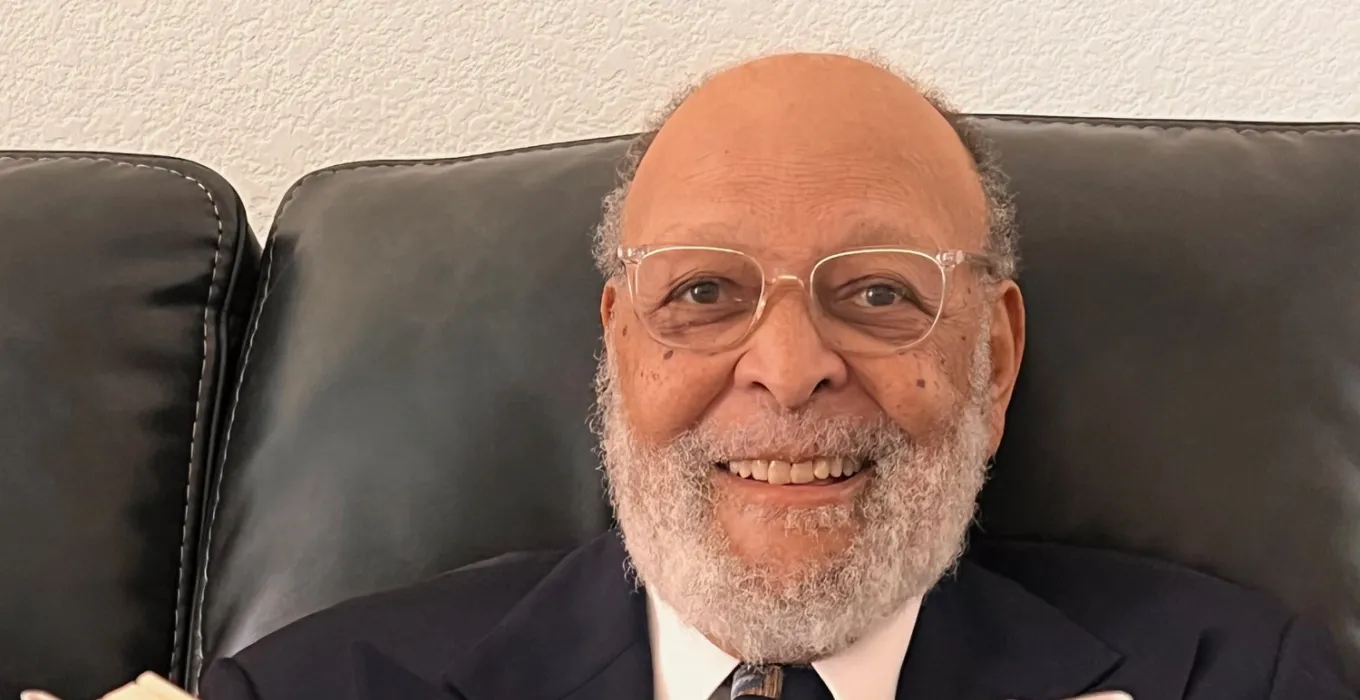The Peaceful Retiree Monthly Interview: Nelson Tsosie
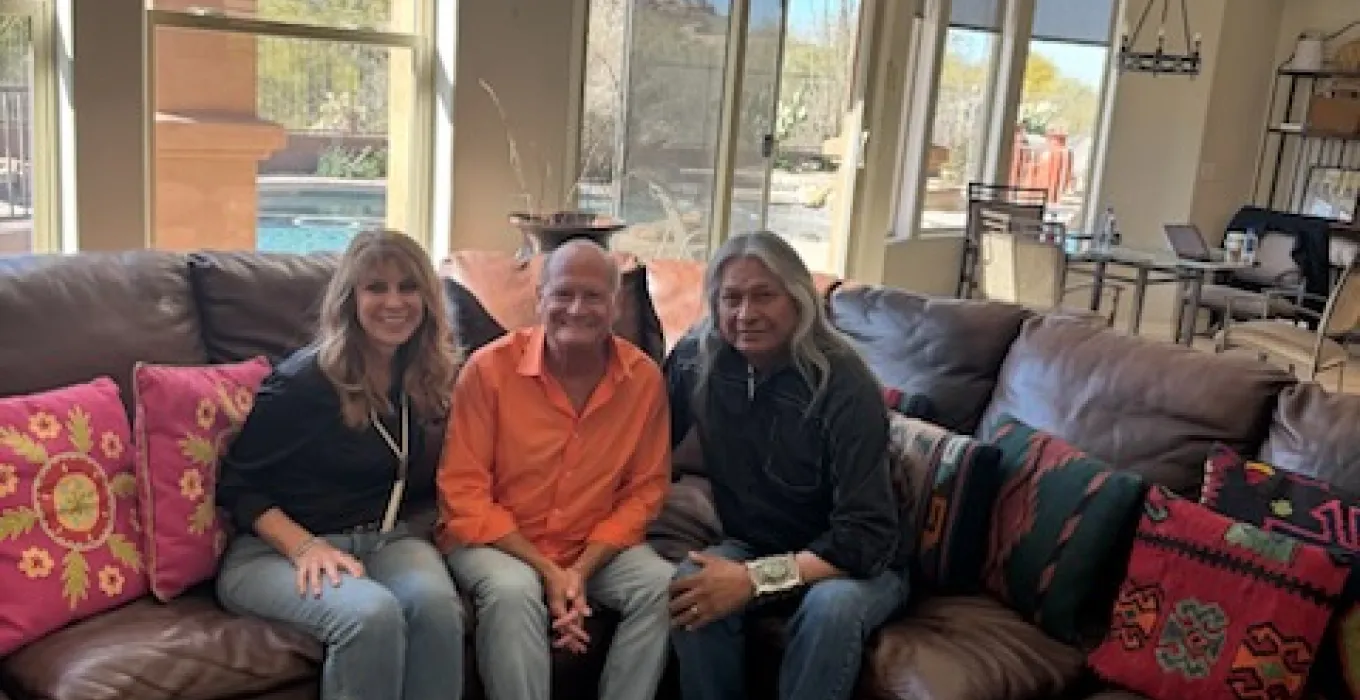
Note From The Editor-Chief: I had the pleasure of spending several hours with Nelson and his wife Valerie at the home of our Contributing Editor and Poet-in-Residence, Bob Weirauch. A special thanks to Bob for arranging the interview and being the catalyst for my new pen-pal, Nelson Tsosie. I had the added privilege of seeing Nelson and Valerie at the Heard Museum 2025 Indian Market where Nelson was a featured exhibitor.
Tom Marks (TM): Nelson, I begin all of the interviews by asking you to tell us your origin story; where you were raised and some special significant parts of your life that were defining.
Nelson Tsosie (NT): I was born in 1961 in Shiprock, New Mexico. My mother was from the Two Grey Hills Navajo Reservation famous for many of the best weavers in the US and my father was from Window Rock, Arizona known as Tségháhoodzání in the Navajo language. In fact, Window Rock, which is located adjacent to the New Mexico and Arizona border, is the capitol of the Navajo Nation and is home to the Navajo Nation Council, the Supreme Court, the President and Vice President.
My Dad died when I was eight years old, but I didn’t see him a lot. He was working much of the time, but he was a gifted silversmith and stone mason; my mother was also a silversmith, but her true talent was as a rug weaver. Rug weaving was a famous part of the Two Grey Hills culture. There were many mouths to feed and people to take care of as my family included my five brothers and four sisters.
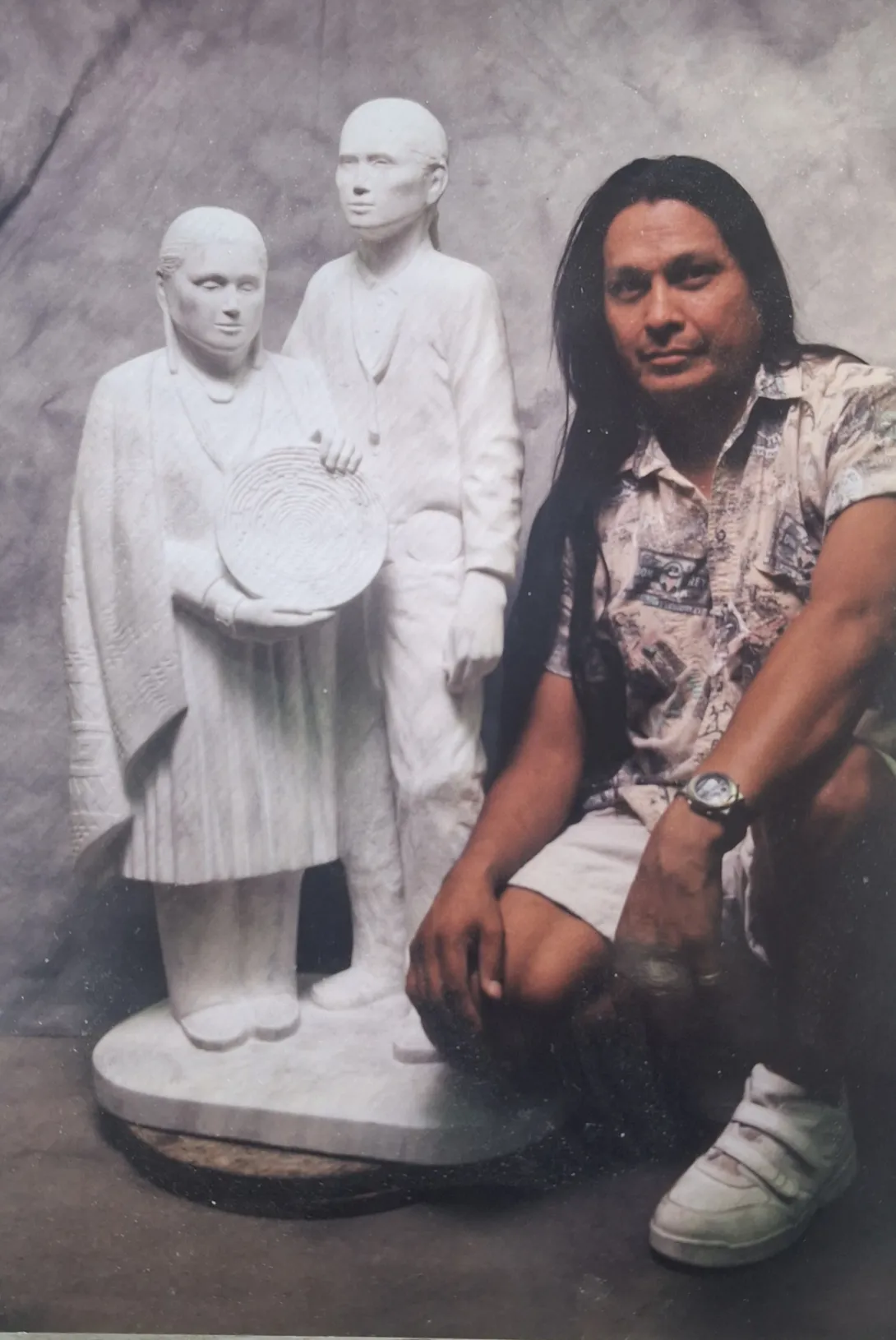
Nelson with "Eternal Devotion"
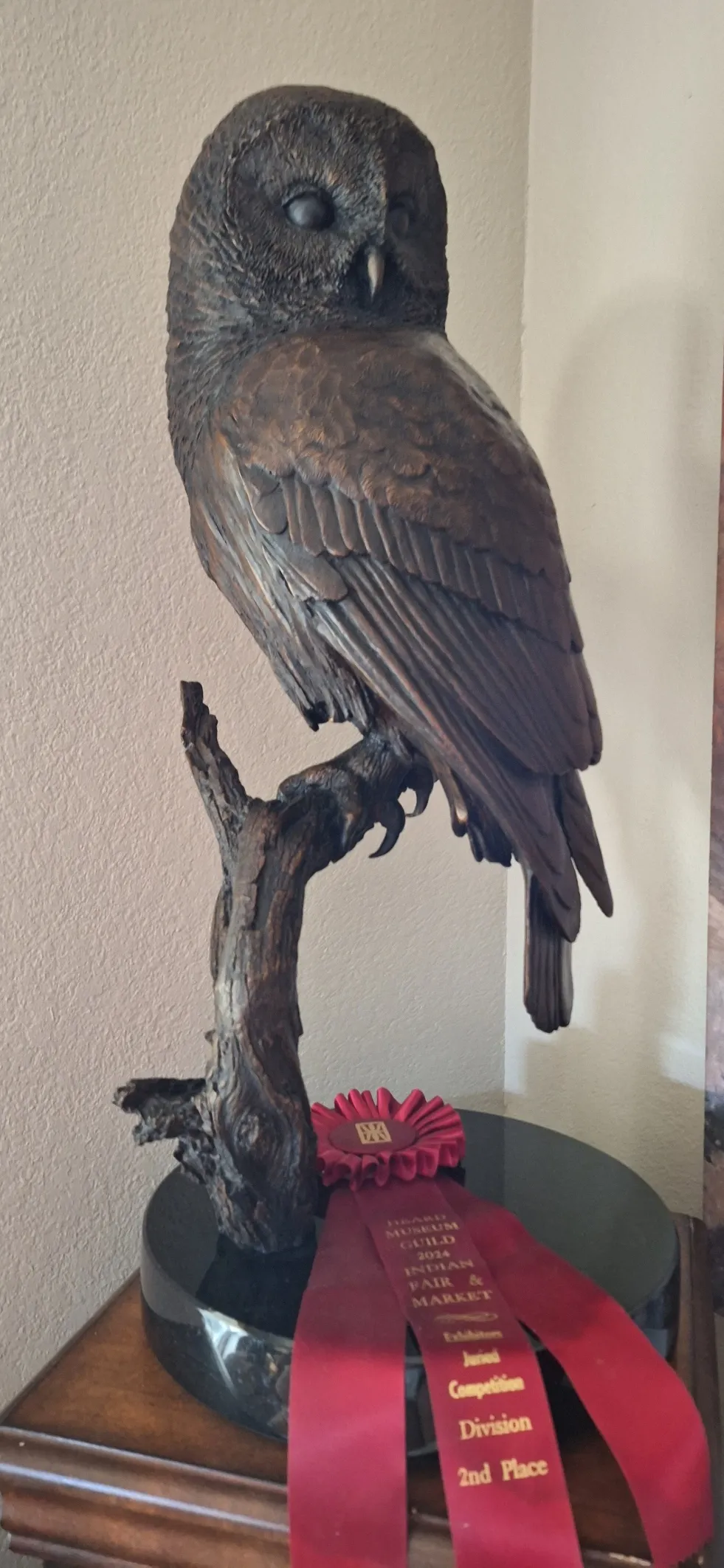
"Silent Hunter"
(TM): Nelson, I’m fascinated that your upbringing included 11 years in government boarding schools. If people don’t know about the boarding schools that the US Government established for Native Americans, they were as far from the elite boarding schools we think of today; in fact, they were probably one part military camps, one part low-security penitentiaries, and one part minority internment camps.
(NT): Well Tom, they certainly weren’t a place for young, impressionable kids. I first went to Toadlina Boarding School which was 60 miles north of Gallup and nearly an hour from my home in Window Rock. From there I was sent to an Indian Boarding school for middle school, and then to another Indian boarding school for 3 years of high school that was called Wingate Indian School. But my senior year I attended a regular high school in Window Rock. I’ll tell you this Tom, it was a pretty hard and lonely life during the school year. I was away from home, I had few visitors, my teachers were white men and women, and it certainly had a lasting impact on my life.
“My whole life has been about survival, so all I know is to keep moving forward, no matter what is in the way. Keep learning and improving yourself to no end. Learn from your mistakes. In art, it is all about constantly learning from your mistakes.” Nelson Tsosie
(TM): It sure seems to me, Nelson, because of your mother and father’s talents, you were born into the artisan world, but I know it’s not that simple. When did you start your formal art training?
(NT): In high school I started doing pencil drawings for friends. Then I did some free-hand drawing of trees and buildings. In terms of formal training, I originally wanted to attend ArtCenter College of Design in Pasadena, California, but I missed the application deadline. So I studied for a few years in Tucson, Arizona at the University of Arizona mostly in two and three-dimensional design and studio art. Just prior to that, I studied commercial art and still-life drawing and sketching in Prescott, Arizona at Yavapai Community College. Most of my formal training included color theories, some advertising principles, work in pastels and charcoal and then I moved to carving in alabaster, then bronze, and then into oil paintings.
(TM): My sense, Nelson, is that you’re an artist’s artist, which to me means that you are accomplished in many artistic disciplines, and can succeed in anything. Frankly, there’s probably nothing you can’t do including weaving a rug.

"Shiprock Wild"
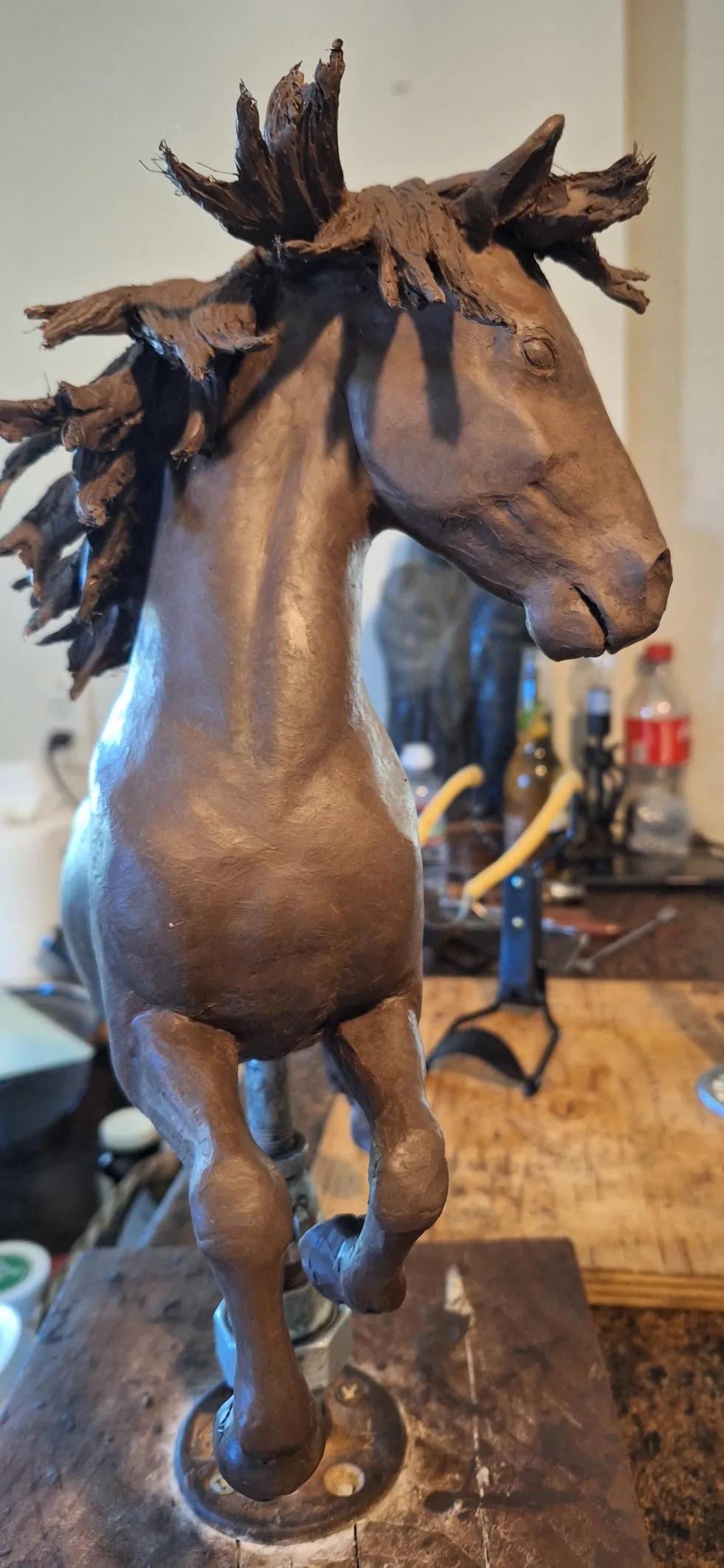
"Untamed WIP"
(NT): In some of my sculptured pieces, I’ve actually carved woven rugs and clothing and I am thinking of trying my hand at weaving so I can pay homage to my mother.
(TM): Pretty early on in your career you became famous. How did all of that happen?
(NT): Well, it wasn’t exactly planned, that’s for sure. I’ve had my work on display in galleries and other places in Taos, Santa Fe, in Connecticut, Arizona, and several locations in Florida, and my commissioned work is all over including in many casinos. In fact, Randy Travis bought a sculpture of mine. But I did start entering my work at various shows where I’ve won first and second place awards at some of the largest Indian shows in the US including in Phoenix and in Santa Fe.
I’ve had a one-man show at the Smithsonian and been a featured artist at the Ritz-Carlton in Naples, Florida. I’ve also had the great pleasure of being able to teach at Poeh Cultural Center in Santa Fe. And I’m very proud to have received a scholarship from the Navajo Nation that allowed me to continue studying my craft in college.
(TM): I’ve asked this question before of different types of artists including sculptors, painters, writers, designers, filmmakers and the like, and my question is always met with responses that range from, “Wow, that’s a really tough question,” or “I don’t know how I can possibly answer that,” so here goes: What’s your favorite piece of work you’ve ever completed?
(NT): Oh boy, Tom, I need to think about that a bit. Honestly, there are so many that are my favorites, but a handful come to mind right away. Before I start naming some of my favorites, let me just say that many of my oil paintings and stonework are very difficult for me to part with because they are truly one-of-a-kind; they cannot be easily duplicated as can sculptures, which are cast in a mold first. So, in regard to having trouble parting with some pieces, oil paintings and my stonework are extremely difficult to part with.
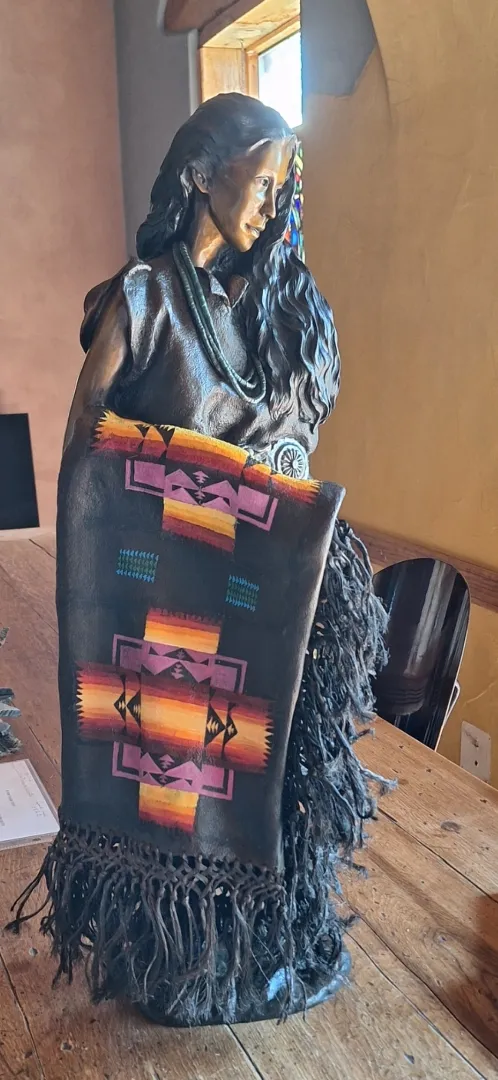
"Ready For Ceremony"
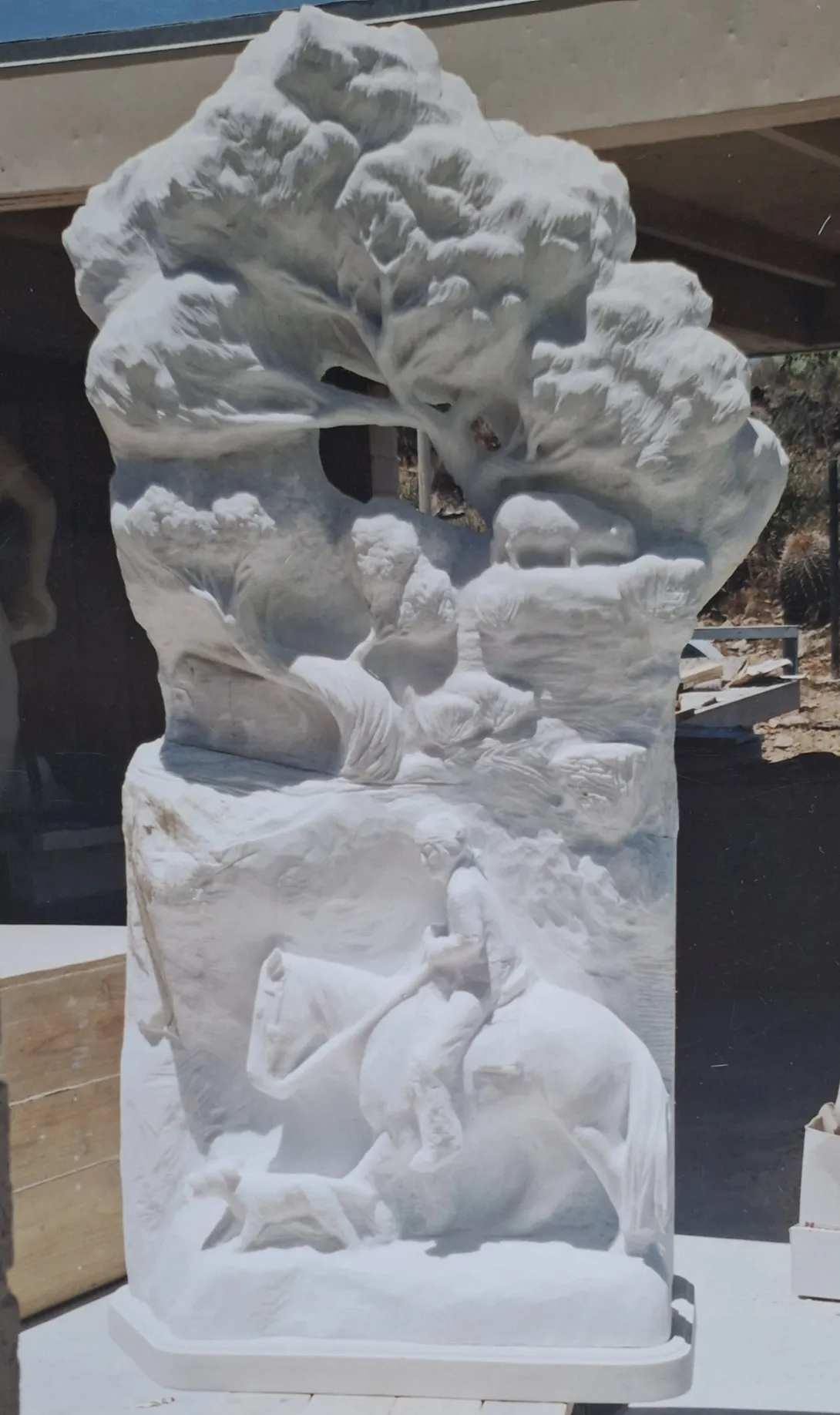
"Counting Sheep"
Some of my favorite works include “Eternal Devotion”, “Silent Hunter”, “Shiprock Wild”, “Untamed WIP”, “Ready For Ceremony”, “Counting Sheep”, “Home At Last”, “Canyon Courtship”, “Rio Chama”, “Man of Wisdom”, and “Teapot Rock”. But honestly, Tom, there are so many. I’m working on a piece right now for the Heard Museum Indian Market that I’m tentatively calling "Hózhó" which is a Navajo term for Being in Balance.
(TM): Nelson, your work is so inspiring to many people all over the world, what inspires you and what drives your creative talents and beliefs? I do understand that those are huge questions to answer.
(NT): Going back to my childhood is probably the best place to start in terms of identifying my inspirations. As a boy, I would leave home and climb rocks and go on hikes. The outdoors was certainly one of my inspirations and that’s why I’m so intrigued by landscapes. But at the same time, I missed so much being in Indian Boarding Schools and that type of racism is, of course, an inspiration, too. We forget what it’s like to be singled-out, it’s terrible, but I’ve learned to rise above those experiences and have refused to let them shape me.

"Home At Last"
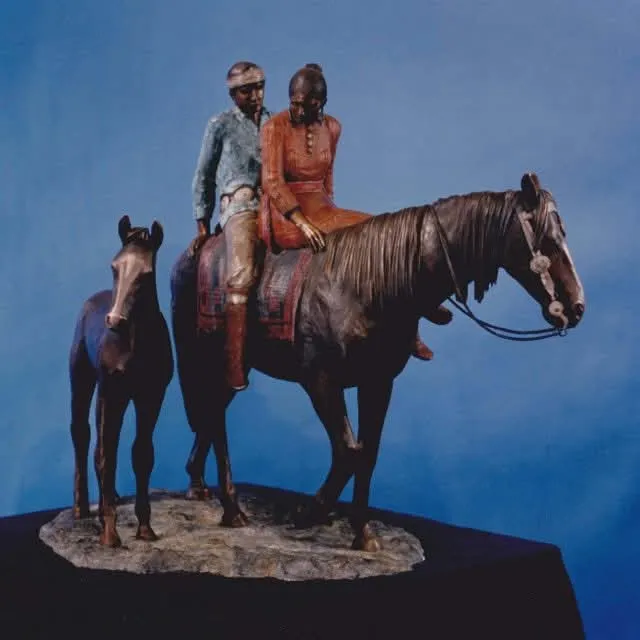
"Canyon Courtship"
Art is philosophy and philosophy is art and both need to be appreciated by as many people as possible. Art should create an emotion and it should be a lighted pathway to preserving any culture for future generations. That’s another more universal inspiration to me.
But also I’m inspired by my family, specifically the reminders of my mother and father and all my rug-weaving and silversmith relatives and friends. Other influencers for me have been gatherings and celebrations; I would watch and photograph people dancing and singing which would bring a smile to my face. Rodeos inspire me as does travel, particularly across the reservation where I would watch sheep herders, and places like Monument Valley and Canyon de Chelly are so influential. And also my Navajo history and culture; I frequently think back to my grandparents who lived their entire lives without running water and electricity, the beauty of my people, and the tradition of life on the reservation are so inspiring.
Lastly, I think the work of other artists is so inspirational to me. I love to visit all types of galleries and museums. Just looking at art for me is like reading a book, but much more preferable. Generally, my ultimate goal is to inspire others through art as I was inspired by others.

"Rio Chama"
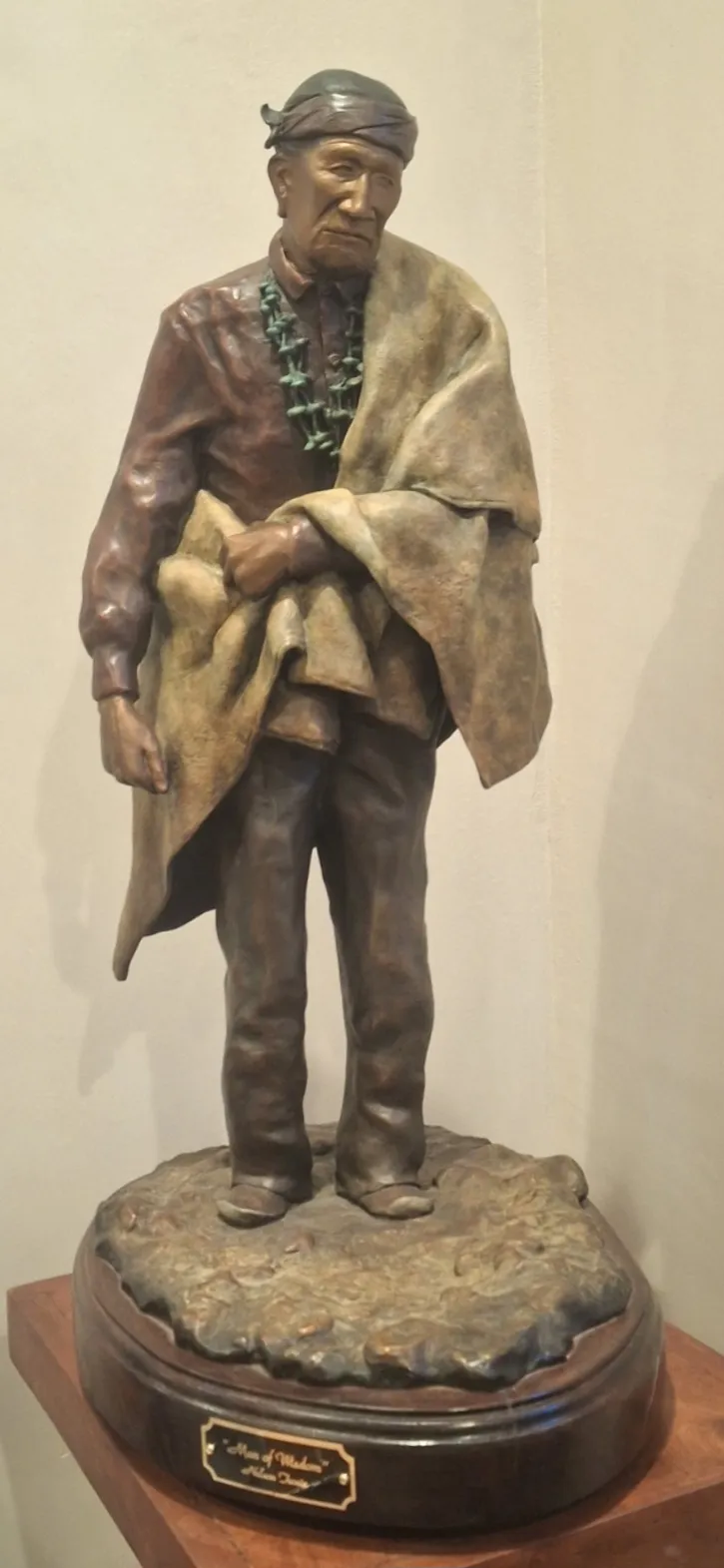
"Man of Wisdom"
(TM): Nelson, I’ve noticed, and this is just my take, that Navajo artist don’t actually retire. They keep on working and creating until they no longer can. In fact, one of my favorite Navajo artists was Mamie Deschillie who worked until the day she died at the age of 90.
(NT): Tom, I think that’s true at least in the instances I’m familiar with. Personally, I don’t even think about stopping my work, not creating, or not artistically preparing for a show, or working on an idea or concept I have. Scaling back could not be further from my mind!
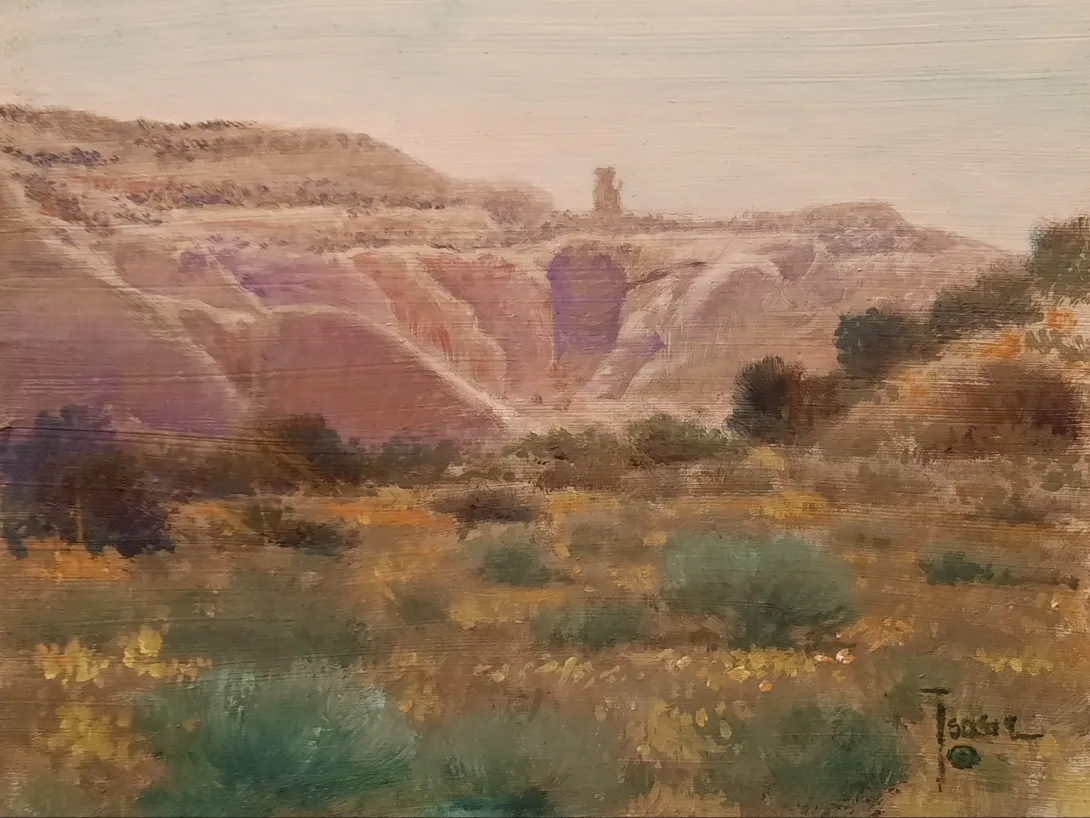
"Teapot Rock"
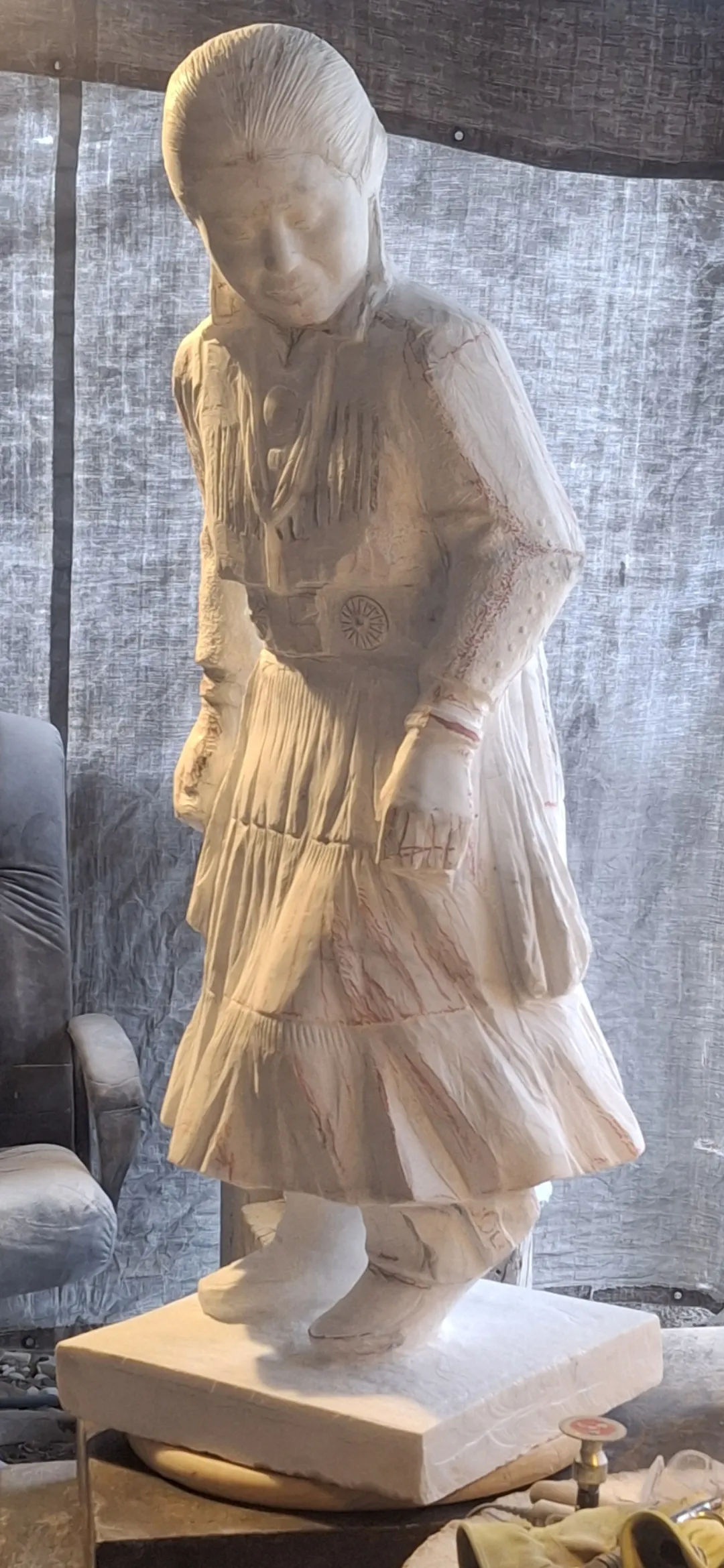
A work in progress: "Hózhó - Walk in Beauty"...translated as being in balance with the world around you.
Learn more about Nelson and his artistry by visiting https://www.tsosie.com/.


